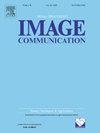Graph-based image captioning with semantic and spatial features
IF 3.4
3区 工程技术
Q2 ENGINEERING, ELECTRICAL & ELECTRONIC
引用次数: 0
Abstract
Image captioning is a challenging task of image processing that aims to generate descriptive and accurate textual descriptions for images. In this paper, we propose a novel image captioning framework that leverages the power of spatial and semantic relationships between objects in an image, in addition to traditional visual features. Our approach integrates a pre-trained model, RelTR, as a backbone for extracting object bounding boxes and subject-predicate-object relationship pairs. We use these extracted relationships to construct spatial and semantic graphs, which are processed through separate Graph Convolutional Networks (GCNs) to obtain high-level contextualized features. At the same time, a CNN model is employed to extract visual features from the input image. To merge the feature vectors seamlessly, our approach involves using a multi-modal attention mechanism that is applied separately to the feature maps of the image, the nodes of the semantic graph, and the nodes of the spatial graph during each time step of the LSTM-based decoder. The model concatenates the attended features with the word embedding at the respective time step and fed into the LSTM cell. Our experiments demonstrate the effectiveness of our proposed approach, which competes closely with existing state-of-the-art image captioning techniques by capturing richer contextual information and generating accurate and semantically meaningful captions.
© 2025 Elsevier Inc. All rights reserved.
具有语义和空间特征的基于图的图像字幕
图像字幕是一项具有挑战性的图像处理任务,其目的是为图像生成描述性和准确的文本描述。在本文中,我们提出了一种新的图像字幕框架,除了传统的视觉特征外,还利用了图像中对象之间的空间和语义关系的力量。我们的方法集成了一个预训练模型RelTR,作为提取对象边界框和主体-谓词-对象关系对的主干。我们使用这些提取的关系来构建空间和语义图,这些图通过单独的图卷积网络(GCNs)进行处理,以获得高级上下文化特征。同时,利用CNN模型从输入图像中提取视觉特征。为了无缝地合并特征向量,我们的方法涉及使用多模态注意机制,该机制在基于lstm的解码器的每个时间步中分别应用于图像的特征映射、语义图的节点和空间图的节点。该模型在相应的时间步长将参与的特征与单词嵌入连接起来,并输入到LSTM单元中。我们的实验证明了我们提出的方法的有效性,该方法通过捕获更丰富的上下文信息并生成准确且语义有意义的字幕,与现有的最先进的图像字幕技术密切竞争。©2025 Elsevier Inc.版权所有。
本文章由计算机程序翻译,如有差异,请以英文原文为准。
求助全文
约1分钟内获得全文
求助全文
来源期刊

Signal Processing-Image Communication
工程技术-工程:电子与电气
CiteScore
8.40
自引率
2.90%
发文量
138
审稿时长
5.2 months
期刊介绍:
Signal Processing: Image Communication is an international journal for the development of the theory and practice of image communication. Its primary objectives are the following:
To present a forum for the advancement of theory and practice of image communication.
To stimulate cross-fertilization between areas similar in nature which have traditionally been separated, for example, various aspects of visual communications and information systems.
To contribute to a rapid information exchange between the industrial and academic environments.
The editorial policy and the technical content of the journal are the responsibility of the Editor-in-Chief, the Area Editors and the Advisory Editors. The Journal is self-supporting from subscription income and contains a minimum amount of advertisements. Advertisements are subject to the prior approval of the Editor-in-Chief. The journal welcomes contributions from every country in the world.
Signal Processing: Image Communication publishes articles relating to aspects of the design, implementation and use of image communication systems. The journal features original research work, tutorial and review articles, and accounts of practical developments.
Subjects of interest include image/video coding, 3D video representations and compression, 3D graphics and animation compression, HDTV and 3DTV systems, video adaptation, video over IP, peer-to-peer video networking, interactive visual communication, multi-user video conferencing, wireless video broadcasting and communication, visual surveillance, 2D and 3D image/video quality measures, pre/post processing, video restoration and super-resolution, multi-camera video analysis, motion analysis, content-based image/video indexing and retrieval, face and gesture processing, video synthesis, 2D and 3D image/video acquisition and display technologies, architectures for image/video processing and communication.
 求助内容:
求助内容: 应助结果提醒方式:
应助结果提醒方式:


